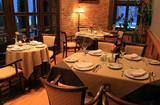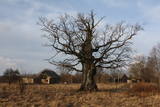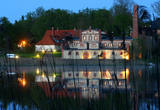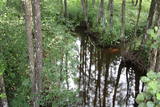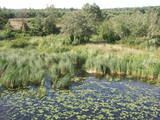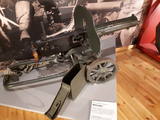| Nr | Name | Beschreibung |
|---|---|---|
|
Im historischen Zentrum von Vecgulbene, in einer restaurierten Reithalle des Landguts, die früher die größte geschlossene Reithalle im Baltikum war, befinden sich ein 4-Sterne-Hotel und ein Restaurant. Es werden ein vielfältiges saisonales Menü und Geschäftsessen angeboten. Lettische Küche: Kalte Sommersuppe, Steak aus Lammschenkel, geschmorter Kaninchenschenkel, gebratener Entenschenkel, Erdbeersuppe mit Eis. |
||
|
Eine kleine Ortschaft mit einer Schule, einer Bibliothek und einem Geschäft. Nördlich von Vīdale kann man die Reste einer Windmühle besichtigen. Wenn man die Richtung Rigaer Bucht nimmt, kreuzt die Straße die Blauen Berge von Šlītere mit Sandsteinwänden und mit eindrucksvollen Aussichten in den Jahreszeiten, wenn die Bäume keine Blätter haben. Auf der linken Seite kann man die Quelle der Blauen Berge sehen, wo eine Stelle zum Wassernehmen eingerichtet ist. Die Straße, die von Vīdale nach Melnsils führt, nennen die Einheimischen den Damm Knipeldambis. Die Straße soll von der Deutschen Armee während des Ersten Weltkriegs gebaut worden sein, indem auf dem Weg Rundhölzer gelegt und mit Kies beschüttet wurden. |
||
|
The renovated historic distillery at Mooste Manor (1909) is home to the Estonian Photo Tourism Centre. The guesthouse on the second floor of Mooste Distillery offers cosy rooms with all modern conveniences. |
||
|
Dieses Gebiet befindet sich auf beiden Seiten des mittleren Abschnitts des Flusses Raķupe. An den Ufern des Flusses gibt es sowohl viele verschiedene Wiesenbiotope als auch mächtige Eichen. Das ist ein wichtiger Platz für seltene Pflanzen und Tiere.
|
||
|
Viens no lielākajiem cilvēka veidotajiem Latvijasparkiem (70 ha), kas izstiepies no Liepājas ostas līdz Dienvidu fortam > 3 km garumā. Tā izveidi uzsāka jau 1870. g. pēc pilsētas mēra K. Ūliha iniciatīvas, uzbūvējot kūrmāju un strūklaku. 19. - 20. gs. mijā ap Dzintaru un Liepu ielām parādījās greznu villu un savrupmāju apbūve. Viena no skaistākajām ir jūgendstilā celtā savrupmāja Liepu ielā 27, kurā atrodas Krievijas ģenerālkonsultāts. Ēkai ir slēgta uzeja, balkoni, pildrežģa konstrukcijas un kārniņu jumts (arhitekti G. Jenike un P. M. Berči). Jūrmalas parks visās sezonās ir iecienīta pastaigu un dažādu aktivitāšu norises vieta. Te meklējams stadions „Daugava”, tenisa korti, koncertestrāde “Pūt, vējiņi!”, vasaras kafejnīcas, minigolfa laukums, bērnu rotaļu laukums, skeitparks. Šeit meklējamas lielākās Latvijas bungas – vides dizaina objekts. |
||
|
Das Wirtshaus befindet sich in dem 250 Jahre alten Dienerhaus des Schlosses von Rundale, wo sich das Ziegelpflaster, Kachelöfen, ein Mantelschornstein und andere historische Gegenstände erhalten haben. Mahlzeiten werden hier im historischen Geschirr, aber Getränke in Tassen der Fabrik von Kusnezow serviert. Lettische Küche: Gebratener Schinken mit Ei, Kartoffeln mit Pilzsoße, gebratene Gans, in Dillen gekochte Krebse, Pfannkuchen mit Honig, Brotsuppe mit Schlagsahne, geschichtetes Brotdessert, Kräutertees, Apfelpirogge. Das besondere Gericht: Am Spieß gebratenes Schweinefleisch mit im Ofen gebackenen Kartoffeln. |
||
|
Taka ved gar Vaidavas krastu, kur iespējams veldzēties dabas skaistumā, kāds vērojams tikai šeit. Starp Apes vidusskolu un kapsētu Vaidavas upes kreisajā krastā ir izveidojušies 8 - 10 m augsti, līdz pat 100 m gari smilšakmens atsegumi - Raganu klintis. To lejasdaļā upes straume izskalojusi nelielas nišas. Pie klintīm pāri upei izveidots gajēju tiltiņš uz otru krastu, no kura klintis paveras visā savā krāšņumā. Te ir teikām un nostāstiem apvīti avoti un alas. Avots ar skaidru ūdeni iztek no vietas, kur Vaidavas upes smilšu klints krasts ir augsts un stāvs. Senāk vietējie ticējuši, ka tas ir veselības avots, jo daudzi to lietojuši dažādām acu slimībām.Dīvainos dabas objektus – Vilkaču priedi un Dvīņu priedes, Raganu slotu, “raganu apļus”, “raganu kaulus” u.c. te var apskatīt un vides gida vadībā mēģināt izprast to veidošanos
|
||
|
Ilmārs Vecelis takes part in the “Potter School” of the Latvian Cultural Fund and, therefore, uses ancient pottery methods that have been tested over the course of many centuries in Latgale. You can tour his workshop, attend the opening of the kiln, try your own hand at the craft, and commission and purchase finished ceramics products. |
||
|
На маршруте сможете узнать особую культурную среду Латгалии, людей, которые ее создают, порадоваться красивым ландшафтам, пройтись по природным тропам и искупаться в каком-нибудь из прославленнных озер Латгалии. В Ливаны узнаете о работе стеклодува, в Даугавпилсе побываете в крепосте 19-го века, где теперь расположен центр всемирно известного художника Марка Ротко. Дорога будет виться по живописным излучинам Даугавы. Информация о маршруте от Latvijas Lauku forums |
||
|
Karulas augstienes augstākais reljefa punkts (137 m.vjl.), kas virs tuvākās apkārtnes paceļas par ~ 60 m. Torņa kalnā ir uzbūvēts skatu tornis ar ļoti plašu apkārtskatu. Uz tā platformas ir novietoti panorāmas fotoattēli, kuros atzīmēti zīmīgākie plašākā apkaimē redzamie objekti – apdzīvotas vietas, pilskalni, baznīcu torņi u.c. Turpat izveidota atpūtas vieta un meklējams Rebases ainavu takas sākums. |
||
|
Dieses Gebiet wird regelmäßig überflutet, wenn der Fluß Lielupe über seine Ufer tritt. Diese Auenwiesen sind wichtig für Vögel. Das Gebiet kann von der Straße Rīga-Liepāja und von der Straße nach Kalnciems aus, die daran entlang führen, betrachtet werden.
|
||
|
The farm on the banks of the River Navesti is Estonia's largest company engaged in the cultivation and processing of organic medicinal herbs. The farm has an education and health path of medicinal herbs, open from May to September. The Energy Eco-Spa offers holiday, conference and accommodation services with a sauna. Spa experience is with local, ecologically grown herbs together with clay, peat and natural plant oils. Baths, wraps and massages help the body to function naturally and holistically. All the products are natural and fresh and are prepared just for you immediately before the treatment. Farm has a tea house completed in 2010 which is suitable for holding seminars, relaxing and in the summertime also for having meals. Herb presentations are held there - first on the field and then in the tea house. There is also a 13-metre viewing tower by the river from which you can get a good overview of the lands of the farm. |
||
|
Gegründet für den Schutz der Kurischnen Nehrung (die größte Dünenformation im Baltikum), Küstenbiotopen, des kulturhistorischen Erben und der kultorologischen Ressourcen. |
||
|
Iespēja atpūsties un relaksēties pirtiņā, baudot latviskos pirts rituālus. Sildīšanās un pēršanās ar pirtsslotām, augu skrubji un maskas, kāju vanniņas un zāļu tējas. Pēc pēriena – veldze dīķī. Pirts tā ir svētnīca miesai, garam un dvēselei. Piedāvājumā arī izglītojošā programma par augu spēku un to izmantošanu savai labsajūtai. Apmeklējums noteikti iepriekš jāpiesaka! Vietu skaits ierobežots! |
||
|
Die Study Tours in zwei geografischen Teilen Lettlands widmen sich dem Roggenbrot - dem Symbol der Letten. Neben den Traditionen des Backens und Essens von Roggenbrot bieten sie auch einen Einblick in den Weg des Roggenkorns von der Geschichte bis in die Gegenwart, sowie Information über die Sehenswürdigkeiten und landwirtschaftliche Betriebe verschiedener Regionen. Diese Studienreise ist für Gruppen und können an jeden Kunden angepasst werden, je nach seinen Bedürfnissen, Interessen und Zeitrahmen. Touren beinhalten: Treffen mit Experten, Besuche, touristische Dienstleistungen - Unterkunft, Verpflegung, Besichtigungen, Busvermietung und Reiseleiter. Die Tour ist in Kooperation mit dem Lettischen Bäckerverband (Latvijas Maiznieku biedrība) entwickelt. |
||
|
Ein beliebtes Café im Zentrum von Sigulda, gegenüber dem Bahnhof. Serviert Frühstück, Salate, Snacks, Hauptgerichte. Natürliche, köstliche Süßwaren und kulinarische Spezialitäten. |
||
|
In Elly wird hausgemachte Eiscreme zubereitet, auch werden Unterkunft und ein köstliches hausgemachtes Frühstück angeboten.
|
||
|
Ikšķiles vārds Pirmā pasaules kara laikā izskan saistībā ar diviem notikumiem – Ikšķiles priekštilta nocietinājumiem (Nāves sala) un kaujām pie Mazās Juglas upes. 1917. gadā 1. septembra rītausmā Vācijas impērijas armija uzsāka uzbrukumu iepretim Ikšķilei ar mērķi ieņemt Rīgu un saņemt gūstā Krievijas 12. armiju. Ar spēcīgu artilērijas atbalstu vācu vienības izsita Krievijas armijas karavīru daļas no Ikšķiles pozīcijām, kas savukārt ļāva Vācijas armijas karavīriem pa trim pontonu tiltiem šķērsot Daugavas upi. 1.septembra pēcpusdienā vācu izlases vienības sasniedza Mazās Juglas upes apkārtni pie Tīnūžiem, kur tām negaidīti ceļu aizšķērsoja no rezerves steigā atsauktā 8000 vīru lielā 2. latviešu strēlnieku brigāde, kura ieņēma pozīcijas gar Mazās Juglas upi. Latviešu strēlniekiem tika pavēlēts aizkavēt vācu karavīrus, līdz visa 200 00 vīru lielā Krievijas 12. armija izies no aplenkuma, nenokļūstot vācu gūstā. Latviešu strēlnieki savu uzdevumu izpildīja pilnībā, diennakti cīnoties pret gandrīz desmitkārtīgu vācu pārspēku. Kauja pie Mazās Juglas upes bija viena no traģiskākajām un reizē viena no leģendārākajām Latvijas vēstures lapaspusēm. "Tīnūžu muižā" ir izveidota 1. Pasaules kara tēmai un Juglas kaujām veltīta ekspozīcija. |
||
|
Diese Tour macht die Reisenden mit verschiedenen Landschaften, lokalen Traditionen und historischen Sehenswürdigkeiten bekannt. In der Regel staunen die Besucher, dass so ein kleines Gebiet so kontrastreich ist. Riga bietet eine mittelalterliche Altstadt und einen eleganten Jugendstilviertel an, danach kommt Sigulda mit drei Burgen, die sich an den hohen Ufern des Urstromtals Gauja befinden. Es ist ein Genuss, auf den guten und stillen Straßen der Insel Saaremaa zu fahren und die Windmühlen, die mittelalterlichen Kirchen und die ethnographischen Dörfer zu besichtigen. Tallinn wartet mit ihrer von der Mauer eingeschlossenen Altstadt, aber der Nationalpark Lahemaa – mit seiner fast mystischen Landschaft und dem Landgut Palmse. Die Tour führt durch ruhige Dörfer von Ostlettland, wo man eigenartige Töpfereien, Orte mit alten kulinarischen Traditionen und das katholische Wallfahrtsziel Aglona besuchen kann. Dem historischen Zentrum von Vilnius sind eigenartige barocke Kirchen charakteristisch. Die massiven Sanddünen der Kurischen Nehrung und des Dorfes Nida und die dem Dorf charakteristischen, blau eingerahmten Fenster gehören zu den anziehendsten Sehenswürdigkeiten Litauens. In Trakai befindet sich die malerische mittelalterliche Burg, die auf einer Insel im See liegt, sowie das kleine ethnische Dorf Karaite, das mit seinen einzigartigen Traditionen und Gerichten bekannt ist. Die Hafenstädte Klaipeda und Liepaja haben sich beide zu regen, modernen Städten mit lebhaften Cafés entwickelt. |
||
|
Celta ~ 1560. g. vietā, kur agrāk atradusies Sakas osta. Dievnamā apskatāms > 170 gadus vecs kuģa modelis. Vietējie ticēja, kas tas aizsargā jūrniekus un bojāejas. Šāda tradīcija Latvijā ir novērojama tikai dažās baznīcās. Baznīcu var apskatīt arī no iekšpuses. |
||
